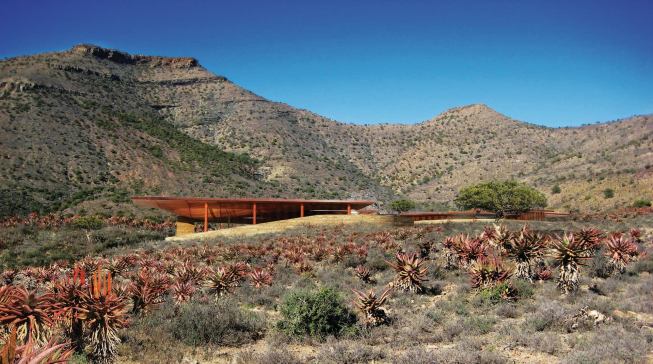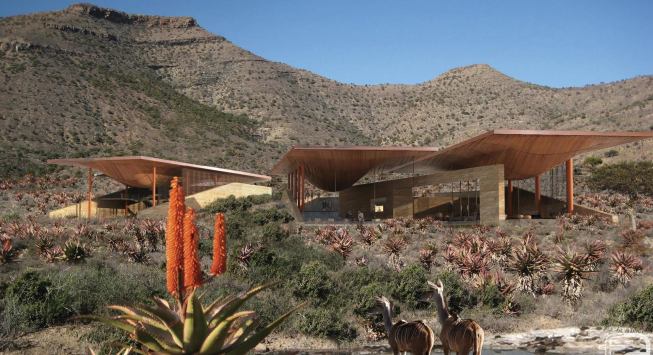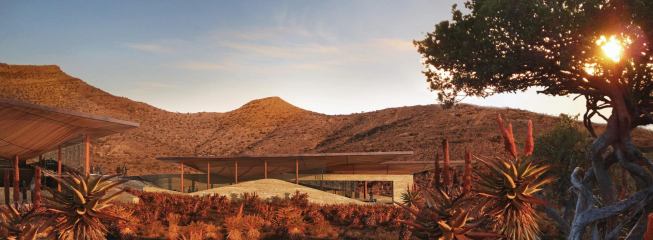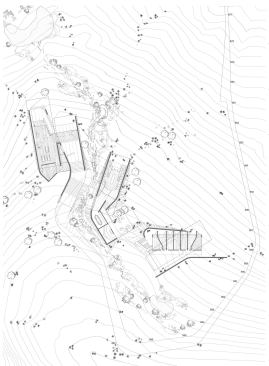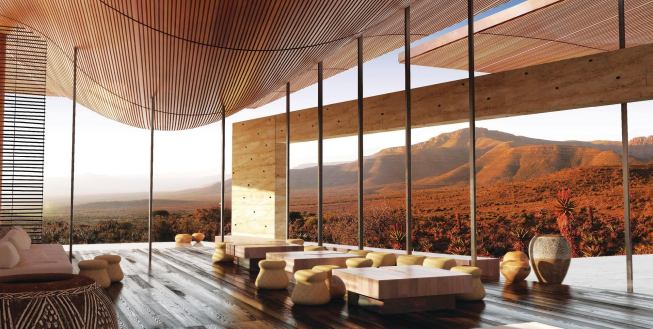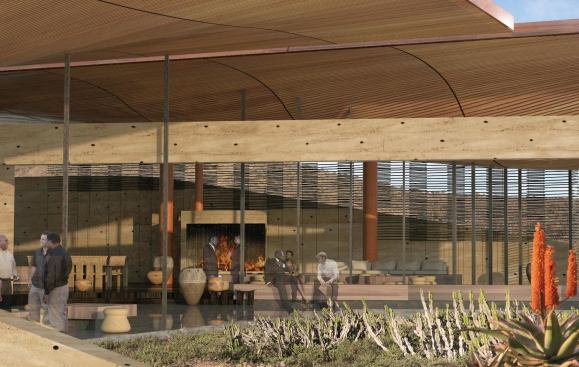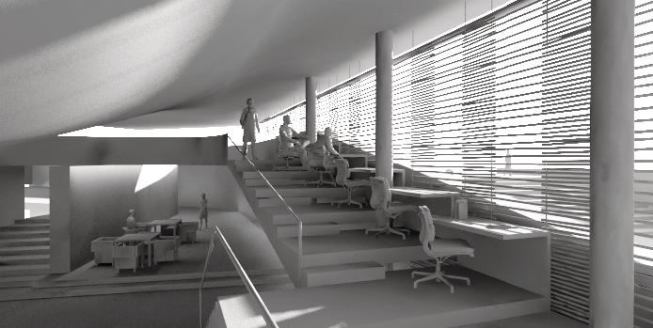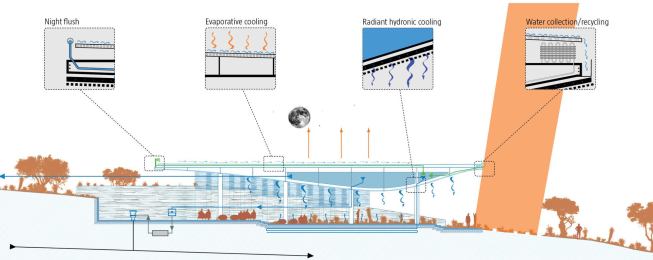Field Architecture
The planned Karoo Wilderness Center is a natural resource conser…
Site: An arid, sloping site in a wilderness area in southern South Africa.
Program: A natural resource conservation-and-management leadership center containing a dining facility, a library and conference center, and residences for visiting conservationists.
Solution: The architects conducted an in-depth analysis of the geography, hydrology, and botany of this arid site and designed a facility that “generates its own energy, harvests its own water, processes its own waste, and provides thermal comfort using no municipal water or power.” Taking their cue from the cupped, self-shading leaves of the indigenous Aloe ferox plant, the architects envisioned a series of saucer-shaped roofs that serve to shade the inhabited spaces below, to gather and store rainwater in covered tanks, and to produce power with photovoltaic arrays along their upper surfaces. These roofs also funnel air currents through the facility, provide evaporative cooling in summer, and serve as part of a radiant hydronic heating system in winter. At the same time, the undulating wood-slat undersides of the roofs echo the traditional gum-pole ceilings of the vernacular houses in the region, while reflecting the undulations in the surrounding landscape and directing views of the wilderness area from the interior. The concrete walls use local aggregate, tying their color to that of the land, and are constructed as a series of shallow pours that echo the strata of the area’s geology.
The 58th Annual P/A Awards
Awards
• Hirshhorn Museum and Sculpture Garden Seasonal Expansion, Diller Scofidio + Renfro
• U.S. Land Port of Entry, Van Buren, Maine, Julie Snow Architects
Citations
• Hinman Research Building Restoration and Adaptive Use, Lord, Aeck & Sargent in collaboration with Office dA
• Ordos 20+10 Office Complex, Preston Scott Cohen
• Taichung InfoBox, Stan Allen Architect
• Karoo Wilderness Center, Field Architecture
The facility comprises three clusters of spaces. An access road brings visitors to an arrival lobby, with a reception office and lounge, and an adjacent dining room and kitchen. A library, conference room, theater, and outdoor classroom make up a second cluster of spaces, with a row of seven residential rooms forming a third cluster. Covered outdoor terraces, stairs, classrooms, and pedestrian paths connect the enclosed spaces and maximize the experience of the arid landscape.
While all of the jury liked the project, Iwamoto found aspects of it “excessive.” Much of the jury’s discussion revolved around the roofs and the expense of storing rainwater in the air in a steel structure. “I don’t think it’s an economical project in terms of the tremendous structure for the roof,” said juror Lisa Iwamoto. “There are better ways of getting water.” At the same time, juror Steve Dumez found “the site plan particularly engaging, almost like a rivulet.” And Dan Rockhill said, “It’s nice to see a project that is not intimidated by the sustainability question, but that engages it to make something very beautiful,” a sentiment with which the other jurors strongly concurred.
The beauty of the project lies not only in its simple forms and powerful evocation of the landscape, but also in the idea of the center itself. As the architects wrote in their submission, the center enables “representatives of the academic and business world [to] directly engage in the resources they depend upon and promote … Conservation and use are demonstrated as equivalent functions … through which less is lost and more is gained.”
Project Credits
Client Withheld
Architect Field Architecture, Palo Alto, Calif.—Stan Field, Int’l Assoc. AIA, Jess Field, Assoc. AIA (design principals); Andy Lin, Erik Bloom, Chris Graesser (project team)
Sustainability Engineers Timmons Design Engineers
Structural Engineers Arup
Conservation Management Wilderness Foundation South Africa
Environmental Impact Analysis Integrated Environmental Management
Size 21,800 square feet
